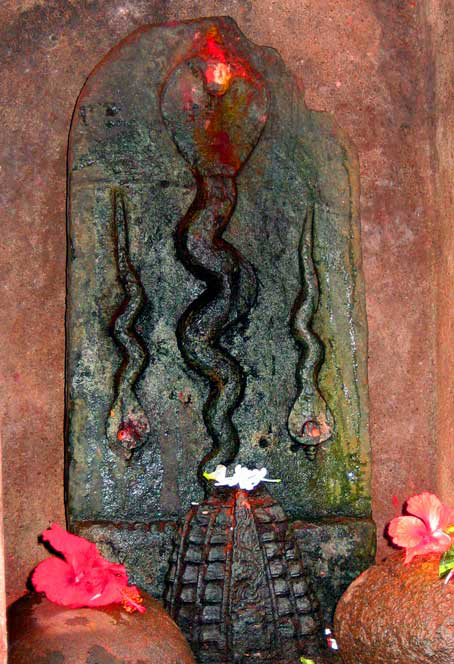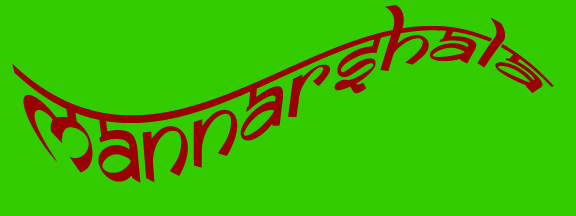
SNAKE WORSHIP IN INDIA In Christianity
snakes are considered to be evil but in India they are considered to be
divine. Almost all the main Hindu deities have a snake attached to them.
Shiva wears a snake garland and allows them to crawl all over him.
Vishnu sleeps on a snake, Ganesha wears a snake belt, Kartikeya has a snake beneath his foot and so on.
Aum Tat SatShiva has a blue neck. It is said that he swallowed the poison that came out of Ananta, the great snake on which Lord Vishnu lies, in order to save the world. Thus he is known as the Savior of the world. Had that poison fallen on this planet everything would have perished. The esoteric meaning behind this is that Shiva, the destroyer in the Hindu Trinity has the power to intake all the poison or negativity in the world and keep it in his neck just like a snake. This is why he is known as the destroyer. What he destroys is the negativity in the world. This is why his neck is blue and this is why he can fearlessly wear a snake as an ornament round his neck. 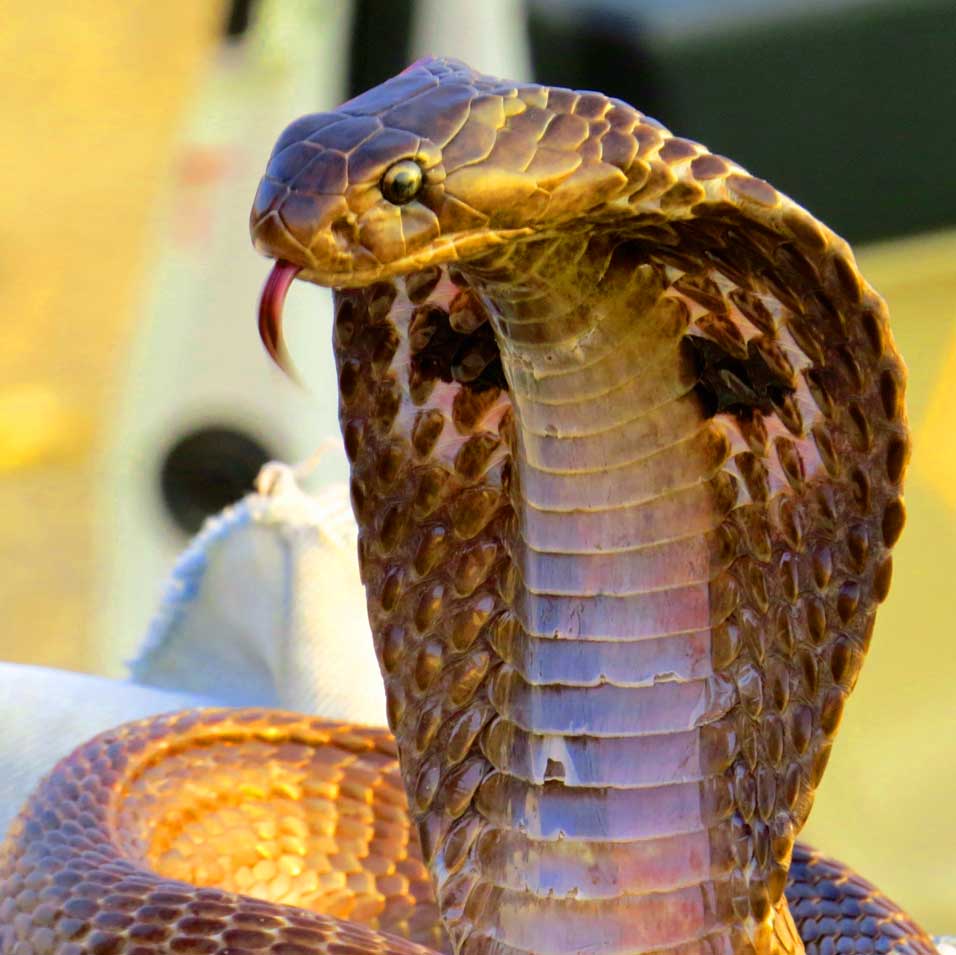 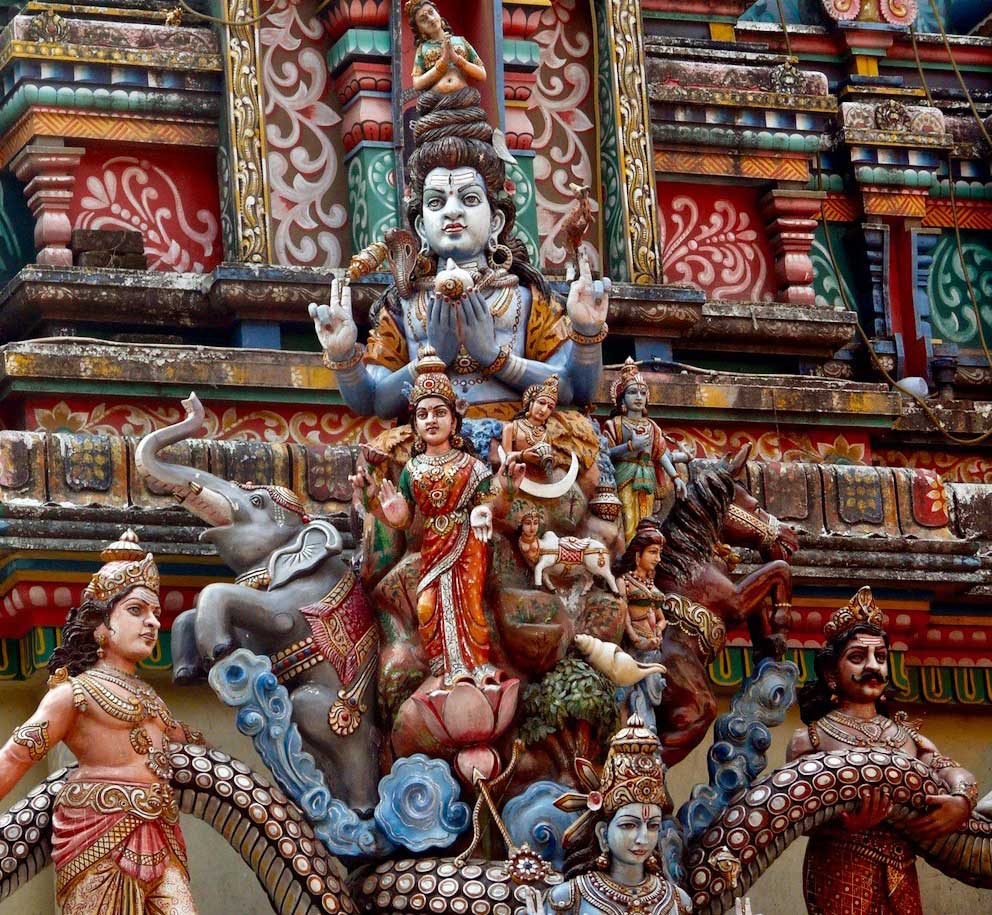
In North India a special day has been kept aside for worshiping snakes. It is said that if we worship snakes on this day they will leave us alone. This day is known as Nag Panchami and comes on the 5th day of the monsoon month of Shravan. This year it falls on the 15th August. Idols of snakes made of mud are decorated and taken in procession and people offer worship. There are some tribes that are famous for catching snakes and they carry live cobras around and show them off and try to make money out of it. 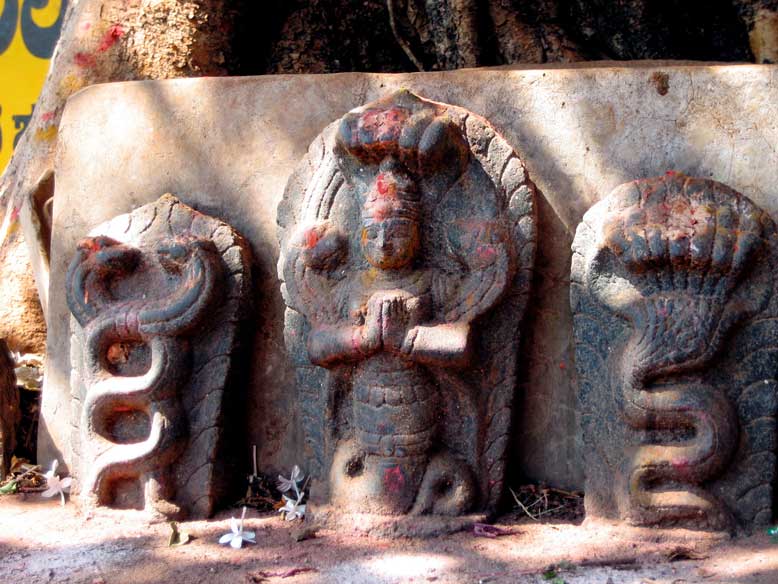 Now the question is whether snake worship has its basis in any scientific data or is it just a superstition caused through fear? Our ancient rishis discovered that the poison in a snake’s body is not generated within its body but from the atmosphere outside. The rishis said that a snake is able to inhale poisonous gases in the neighborhood extending to a few kilometers in circumference. Hence one of the Sanskrit names for a snake is “Vayubhakshakan” which means “the one who eats air”! The snake that is capable of hissing out a lot of air is also capable of inhaling a vast amount of poison from the air which it retains in its poisonous sac to be used to catch its prey and of course to bite unwary and careless humans. Air pollution in hot places is more than in cold climates so you will find that nature has provided more snakes in hot climates than in cold. Unfortunately most people do not know this and always try to kill snakes as soon as they see them. Every creature has a right to live in this world till the end of its allotted life span. One who puts an end to that life before it reaches its end is guilty of a great crime. Most snakes will not attack unless provoked. Every creature has a role to play in the world. If snakes did not exist in this world, the poison in the air would multiply. The balance of nature is very delicate and very beautifully designed. When the human being disturbs this delicate balance all sorts of troubles are bound to follow. Unfortunately we think that we are the sole inheritors of this magnificent world and everything else is created for our use. 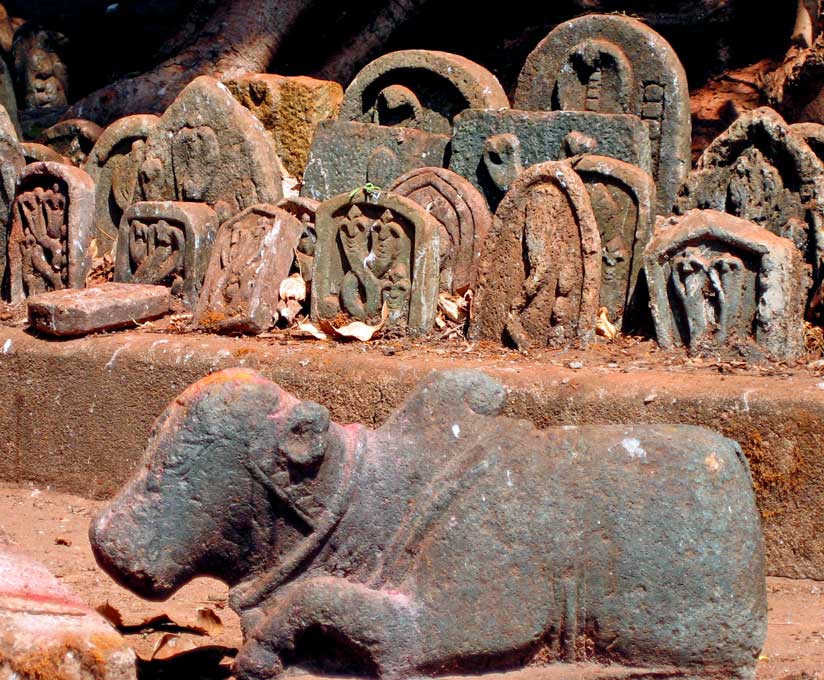 Nowhere else in India is the cult of snake worship so intricately linked with the daily lives of people as in Kerala. It is closely interwoven with the life of the people of the State and is a component of its rich cultural heritage. Since it was well known to the rishis that snakes keep air pollution in check, all the ancient Kerala households were advised to keep a portion of the garden reserved for them. A snake temple was usually built beneath an old peepul or banyan tree which had spreading leaves and aerial roots. The peepul tree is the only one that breathes out oxygen both by day and night. Our rishis knew this and that is why they told us to venerate it and never cut it down. (As usual a divine reason was always given in Hinduism to mask a scientific truth which would not be understood by the common people of those times.) A lamp would be lit for the snakes and some cow’s milk mixed with rice powder and turmeric would also be kept there. It is a common belief that this is the type of food the snakes love. It is said that the poison in the air is the main cause of arthritis and those who live close to a snake temple will not suffer from this disease. Often you would find that ants made huge mud hills out of purified mud under these trees reserved for snakes. The ants would forsake their hills and snakes would take them over. The mud from an ant hill is supposed to be most effective in treating all types of cuts and bruises and can even be taken internally for fever and other types of infectious diseases. It should be smeared over the affected parts. Another important fact that was observed was that the snakes were able to direct the electromagnetic waves in lightning into their mud castles thus ensuring that it would not harm the household that had given them shelter. 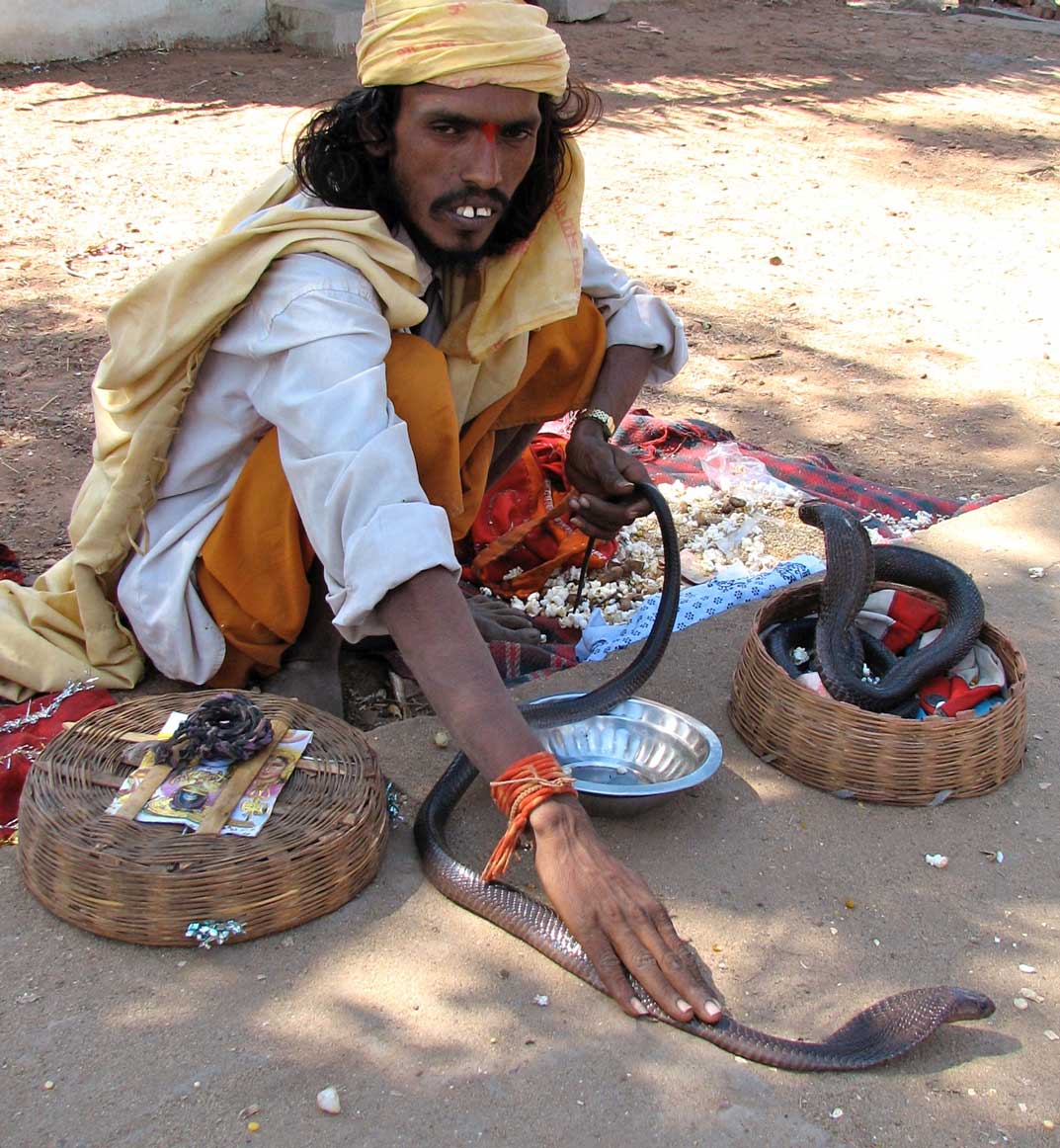 Another strange thing that was noted in these Kerala households was that new types of plants and new strains of rice etc would sprout in the area surrounding these ant hills. These used to be preserved and used by the household. Our rishis knew this and that is why they advised every household to keep a place aside for the benefit of the snakes and to revere them as gods. Needless to say not a single person living in the house was ever bitten by a snake even though someone from the house went daily to light a lamp and keep some offering at the foot of the tree or place which was reserved for them. As soon as you enter a snake grove you are sure to hear rustling among the dead leaves and feel unseen eyes following your every move. It is quite an uncanny feeling. The stillness within the deep shade of the groves, the eerie feeling beneath the trees, the unique rituals, practices and taboos associated with snakes, the mystery associated with the treatment of snake bite victims, the fascinating folklore's associated with these temples known as “kavus’ in Kerala are all part of the rich culture of the land. Those who are sensitive enough can definitely feel the presence of some primeval powers in these serpent groves. With the disbanding of the ancient Kerala households these reservations for snakes were callously destroyed. Strangely it was found that all those old households that had cruelly broken down the habitat of the snakes seemed to have some curse on them. Many of the members died tragic deaths. Misfortune seemed to beset the family members from every side. These were all attributed to the curse of the serpents. Now many of these households when they are broken down take the trouble to remove the snake idols and other paraphernalia to some temple which has a place reserved for the snakes. Actually every temple in Kerala has a small place in the compound which is reserved for snakes. The two main snake temples in Kerala are known as Mannarshala near Trivandrum and Pambumekkattu near Trichur. In Mannarshala the chief priest is a lady belonging to that particular branch of the Namboodiri (Kerala Brahmin) family. She has to be a celibate and when she dies she appoints the eldest female member of the family as her successor. The place is actually crawling with snakes even though we are hardly likely to see any. Devotees walk about everywhere and there has never been an incident of anyone being bit. Many strange rites and customs are connected with this temple. Ananta or Adishesha is the name of the serpent on which Lord Vishnu reclines. The word “ananta” means endless and thus the snake represents the infinite and eternal nature of the world. It is “mula prakriti” or primordial Shakti or power from which the whole of this diversified creation arises. Vishnu lies on this, thus signifying that the whole cosmos is under his control and can be activated only at his command. The goddess Lakshmi sitting at his feet represents “kriya Shakti” or the power to create. The waters of infinity on which the serpent bed floats is the Unmanifest Brahman or Supreme Energy from which everything else comes (the zero point field of quantum physics). This is why in the Bhagavad Gita, Lord Krishna says that among snakes he is Ananta. 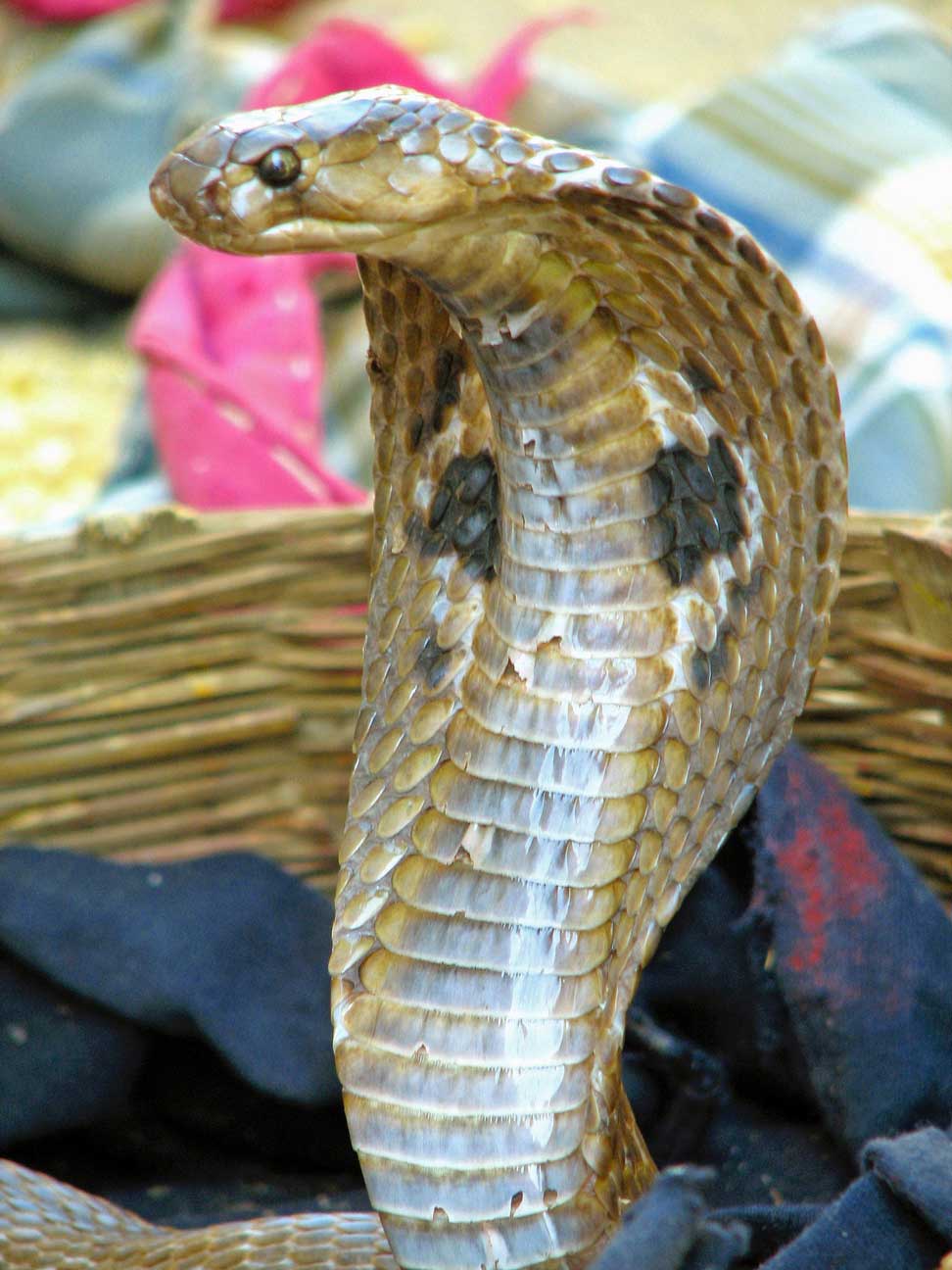 The human body has many centers of psychic energy known as chakras. Of these seven are considered most important. The psychic energy generated in the spine is called the Kundalini Shakti which is known as the serpent power. When a person’s consciousness increases, this Shakti rises up like a snake through the spinal column on which the chakras are situated. The rising of this power through the spine corresponds to the increase of the psychic power in the human being which eventually leads to union with the Supreme power of the Brahman. Science says that the human brain still retains a reptilian centre which is a throwback to our evolutionary past. The snake is a very sensitive creature and can sense the slightest change in the atmosphere, because its whole body is in touch with the ground. It has no ears; it is said to be stone-deaf, so its whole body turns into an organ of hearing. If a tsunami is forecast in Kerala, a snake in the Himalayas will be able to know this a month ahead. Its sense of perception about natural events is acute. It has such a keen sense of discernment that it can perceive certain higher dimensions which human beings are desperate to know. By worshiping them, the Hindus believe that they will also be able to acquire part of their wisdom. This is the basic reason for the worship of snakes in India. It is part of our culture and has existed for many centuries. Mannarshala (Refuge for snakes) Kerala has many esoteric secrets of which many of them are hidden in the annals of its temples. One of the strangest of the temples to be found in Kerala is known as Mannarshala, which is a refuge for snakes of every type and description. It’s hoary past intrudes into the 21st century but it continues to retain the mystic magic of another age. It still clings to its ancient customs, which are as old as life itself. These traditions are centred round the belief in the power of serpents – their ability to protect as well as to destroy. 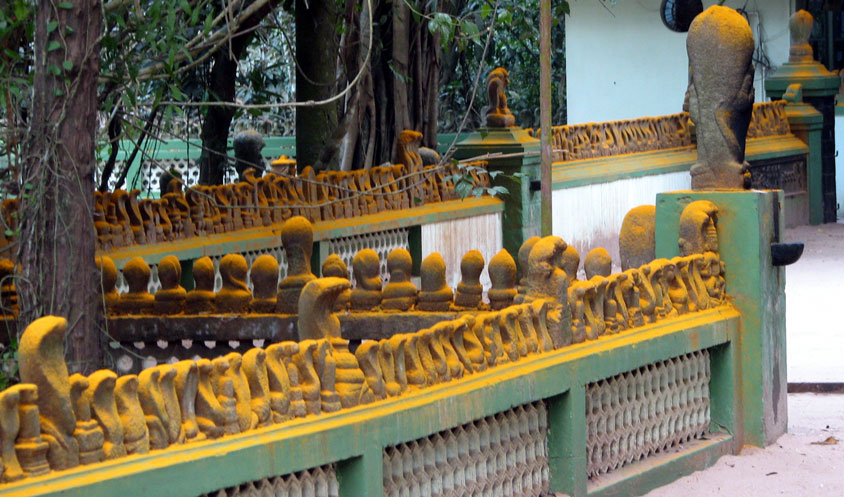 Hinduism is a unique way of life. What it feared or could not understand, it enfolded into its capacious bosom and revered and loved so that it became tame and domesticated. It was the power of love that could transform a wild creature into a tame one. The more you fear a thing, the more power it has to harm you. This fact was a well-known aspect of Hindu thought. 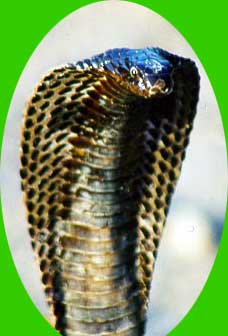 Snakes are things which all human beings have dreaded and shunned yet the ancient civilizations always gave respect to them. They were said to possess the power to curse you if not in this life then in another. Their curse would follow you life after life, until you atoned for it by some means or other. All skin diseases as well as leprosy as said to be due to the curse of the snakes (sarpa dosha). Many other misfortunes are also accounted for by their curse. Therefore all over India it is considered most inauspicious to kill snakes. It is only the moderns who kill what they fear! The Hindus knew that death was not the end of the story of life. By killing a snake they might be able to save this life but it would result in untold suffering in another life. Thus we find that many of the old houses of Kerala had a little copse exclusively reserved for the use of snakes. They lived there in comfort and the family used to worship them and give them milk to drink and they left the family alone and never bothered any of the members. With the breakdown of the ancient joint family system and the compulsion to move into concrete flats instead of houses surrounded by land, these habitats for the snakes became a big problem. Unless they were housed properly the family was sure to incur their curse. Luckily in Kerala there are three big temples totally dedicated to snake worship. Most families transferred their snake families to these temples and thus got rid of their burdens. In ancient days snakes were not considered a burden but were a part of the family just like the cows and goats and birds, but now the word “family” has narrowed down to mean only a father, mother and their human children, and in this there is certainly no place for a snake or for any other creature for that matter! 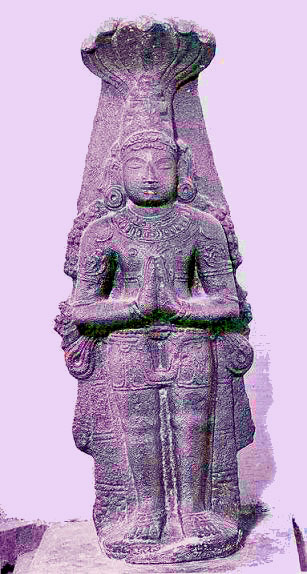 Nagaraja The king of snakes is known as Nagaraja and the temple of Mannarshala is dedicated to him. It has a unique history even in a place like Kerala, where fact and fiction, myth and miracle mingle together. The town of Haripad lies twenty miles north of Trivandrum, the capital of Kerala. The Nagaraja temple of Mannarshala is three kilometres to the north of Haripad. The history of this temple is a fascinating blend of fact, legends and events that have been handed down through the generations. In fact it is said to have existed at the very start of this present epoch known as Kali Yuga. Parashurama was the 6th incarnation of Lord Vishnu and he is closely connected with the formation as well as the history of the land known as Kerala. He is said to have propitiated Varuna, the god of the sea who allowed him to carve out a land for himself out of the seabed. Parashurama threw his axe far out to the sea and the land mass known as Kerala rose up. Unfortunately the ground was totally saline and unfit for cultivation. He then did tapasya to Lord Shiva who told him that the land could be made habitable only by spreading the poison of snakes all over it. For this he would have to worship Nagaraja, the king of snakes. 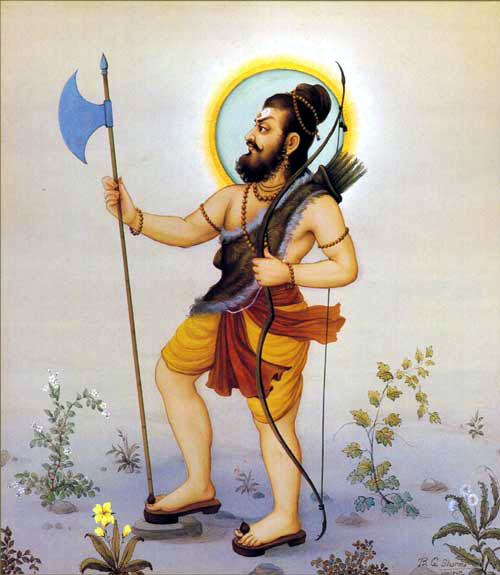 Parashurama Undaunted by this, Parashurama chose a fitting spot for his tapasya and proceeded to worship Nagaraja who eventually appeared to him in all his splendour. He spread his deadly venom all over the land until it was completely desalinated and Kerala emerged as an emerald paradise, rich in natural vegetation and resources. Parashurama now begged Nagaraja to take up his permanent abode in this beautiful spot, to which he agreed. Parashurama then struck the earth with his axe so that water spouted out of it. He bathed himself in this water and took the same for the installation of the temple of Nagaraja. This is the spot where the present temple of Nagaraja is located in Mannarshala and even today this water has to be used in all the rituals. The idol of Nagaraja, which was consecrated here by Parashurama, is supposed to contain the spiritual essence of Brahma, Vishnu and Shiva. Its original name was Mandarashala due to the fact that the region was covered with Mandara bushes containing white flowers. In the course of time this was shortened to Mannarshala. As in many other famous temples of Kerala, Parashurama himself performed the first worship of the deity and then taught the method to the priests appointed by him. They were warned of the dire consequences, which would accrue to them if they went against his mandates so it is that this is one of the few temples, which has escaped the invasive modern culture and sticks faithfully to its ancient principles of worship. He also advised every home in Kerala to reserve the southeast or southwest corner of their compound for snakes who were the true guardians of this land. 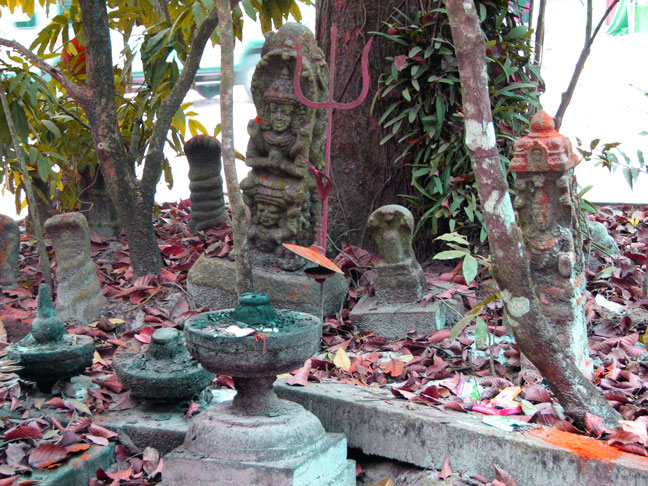 Many years passed until a time came when the family of priests was threatened with extinction since they had no male heir to carry on the sacred trust of the worship of Nagaraja. In fact just one couple was left of the erstwhile large family. They didn’t know what to do and prayed to their family deity to help them. Just then another disaster struck. A raging forest fire consumed all the surroundings but miraculously, left the temple untouched. All the snakes in the vicinity rushed to take shelter at the feet of Nagaraja. Many of them were badly burnt. The couple were most distressed to see their snake children in such a plight and did their best to treat the victims with mantras and herbs. They also made little abodes for them and told them to stay there in peace. Nagaraja was so pleased by their compassion for his family that he appeared before the lady known as Sri Devi and told her that he would be born as her son in two forms – one in his own form as a five-hooded snake and another as a human child. To the amazement of the couple this vision came to pass within a year. In the Malayalam month of Kumbhom (February\march), on the day when the star known as Ayilyam was in ascendancy, Sri Devi gave birth to two boys. The elder was a snake and the younger a human. The star Ayilyam is supposed to be a very auspicious one for snakes. The children grew up together and were initiated into all the Vedic rites and rituals pertaining to the worship of Nagaraja. After the birth of the children, the couple gave up conjugal life and became recluses, totally engaging themselves in puja and prayer. 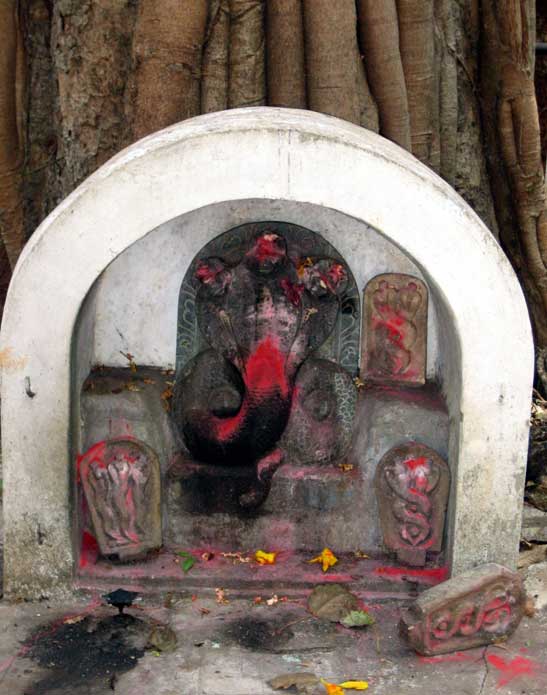 The day on which the star Ayilyam falls in the month of Kanni, (September\October) is very important in all snake temples and many special pujas are done on that day. One year due to some unforeseen circumstance the husband was unable to attend to the puja on that day. In fact he was half way through the puja on the previous day when he was told about the occurrence, because of which he was unable to complete even that puja. This is supposed to be a serious crime and one which is sure to incur the wrath of the deity concerned which in this case happened to be Nagaraja himself. There was no male available to continue the puja on that day. The next day, was the all-important festival of snakes that was mandatory for them to perform. Sri Devi was sunk in despair when she heard this. However she decided to take matters into her own hands. She purified herself in the waters of the holy tank and went into the sanctum sanctorum where she sat in deep meditation. At that time she heard Nagaraja telling her to continue with the puja herself. She was to complete that day’s puja as well as perform the next day’s all-important puja. From that day onwards she was to remain within the temple precincts and forget about her duties in the house and concentrate only on the worship in the temple. A new chapter was opened in the annals of the temple. In fact it was a new chapter in the annals of Kerala temple history. The eldest female member of the family was accepted as the high priestess. Normally the work of conducting pujas was one which was totally in the hands of males and this was a most unorthodox and unprecedented procedure but such was the devotion and spiritual quality of the female members of this family that they soon rose to a highly respected and revered position in society. To this day the main pujas of this temple are conducted by the eldest female member of the family who is tutored from a young age to accept the mantle of responsibility, which would fall on her. They are to be completely celibate and have to follow a rigid discipline of prayer and meditation. 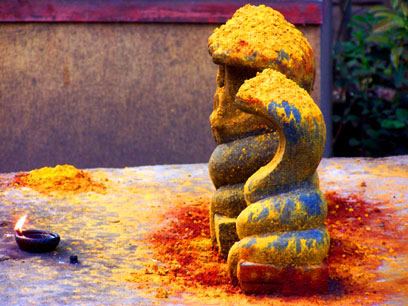 To get back to our original story. When the boys attained manhood, the human boy got married. The snake son was known as Ananta and due to his presence, the family prospered and devotees started pouring in. The family was the guardian of the sacred lore pertaining to the cure of snake bits, rats bites, skin diseases and so on. Even now they practise this and it is a closely guarded secret of the family, which has been passed down from generation to generation. The snake Ananta used to roam about freely in the compound. He was perfectly harmless but the pilgrims were not to know this and his form was enough to terrify most of them. On one Shivaratri day (festival of Shiva), there was a big crowd and Ananta went around scaring people in a playful way, until at last his mother got a bit annoyed and told him, “Why don’t you stop startling people and go and sit in a corner in the cellar?” Hardly were the words out of her mouth when she realised her mistake and apologised for her words. But by then he had slithered into the cellar and only his voice could be heard. “In future if you wish to see me, you can come to the cellar but see to it that no one except my family members are allowed entry”. With these words the door banged shut. The mother was heart broken. Next day she took his favourite food and went in but she could not see him anywhere. She broke down and wept. Ananta’s voice was heard once again. “Mother leave the food and go away but you may return on the 5th day. If there are any leftovers it can be distributed among the family members. Once a year on this day (the day after Shivaratri) you may offer food to me. The rest of the time I shall remain here in samadhi. On this day the members of the family may come here to get my blessings. The rest of the time no one should disturb me.”. This custom is followed to this day and the family members assemble in the cellar on this day to get the blessings of Ananta who is endearingly referred to as Mutthassan or grandfather. Mannarshala is an exceptional place since the senior most female member of the family is the final authority on all matters pertaining to the puja at this temple. She is known as Valliamma (big mother), and is installed before the cremation of the previous Valliamma. There are many unique facets about the mode of worship in this temple. The Valliamma has to be a celibate and she is not allowed to go out of the temple compound for long. If she is forced to go she has to return before nightfall. She is not allowed to communicate directly with non-family members. Her time is to be spent exclusively in puja, prayer and meditation. The Valliamma who became a living legend was known as Savitri Antharjanam. . She stepped into the honourable position of Valliamma at the tender age of fourteen and for the next seventy-five years she lived the life of a yogi. Many are the miracles and cures, which are attributed to her. As one passes the ornamental gate into the compound it appears as if we have entered another age where nature and man lived in an amicable relationship with each other. There is a mysterious aura about the place, which is covered with medicinal trees, creepers and plants all favoured by snakes. We know that we have entered another world that belongs to another species. Rows upon rows of snake figures carved on granite sit on the walls and line the grounds. There are also many snake pits made of sand in which numerous snakes live happily. These include snake families that have been brought here from other houses in Kerala, which have no facilities to keep the snakes in their own abodes. It is a common occurrence to see snakes slithering away into the bushes. We are brought to a realisation that this is their ground and we are the trespassers. They are totally unafraid and in turn they generate a feeling of awe and respect rather than fear and disgust.  The little temple of Nagaraja is supposed to be six thousand years old and is the one, which had been consecrated by Parashurama. Nagaraja’s idol made of granite stands surrounded by serpents on all sides. His two hands depict the symbols of protection and boon giving. He is believed to be a combination of the potency of Ananta ( the snake on which Vishnu lies) and Vasuki (the snake round Shiva’s neck). Part of the worship offered to him is supposed to reach Ananta who resides in the cellar. Sarpayakshi is his consort and has a separate shrine of her own. Her idol is made of a quartz like, transparent white stone. These two idols are hoary in antiquity and have defied the growth of centuries. A group of granite idols representing serpent divinities are to be seen in front of the temple. They are mainly offerings by devotees. The cellar is another of the most sanctified areas of this temple. An idol of her serpent son, Ananta has been installed on the porch of the cellar and here the Valliamma offers food to her beloved son on the day after Shivaratri. Close by is a clump of trees called Appupan Kavu, the grandfather’s grove, which is supposed to be his favourite haunt. Some fierce looking yellow snakes, supposed to be his attendants, inhabit this place. They move about freely here as well as in the house without fearing or harming anyone. The family can know what situation is in store for them by observing their stance. If they sway gently with upraised hood, they are happy and everything is well. If the hood is put down misfortune is indicated. Many of the family members mention seeing a golden snake that entered the room of the senior family member and lay there with lowered head, refusing to budge. Within a short time, Savitri Antharjanam, the great Valliamma, breathed her last. 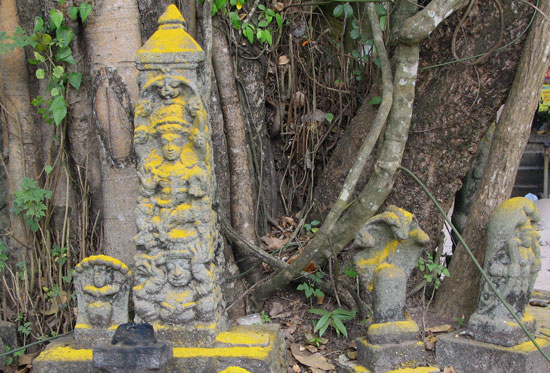 Traditional music sung by the caste known as Pulluvas accompanied by their simple hand-made stringed instruments, is highly beloved by snakes. Many of these people are given sanctuary by the family and live in the compound, as their presence is compulsory for all, important festivals. They are supposed to be the descendents of the original family who had sung for Nagaraja’s delectation. Once in forty-one years, the festival known as “Sarpa Pattu”, (Serpent Song) is conducted here. This is one of the fabled festivals connected with snake worship in Kerala. Records reveal that it has been performed in this temple, one hundred and seventy-four times with only one break. This is a very elaborate ritual and includes the performance of tantric rites based on highly scientific principles. The expenditure is astronomical. Many traditional art forms of music and dance are encouraged during this festival. Stories of cures of snakebites and other miracles are often to be heard in this temple. It also conducts pujas for the removal of “sarpa dosha” or the curse of the snakes. Barren women make an offering of a round pot known as an “uruli” to Ananta and are blessed with a child. Mannarshala is really a place of mystery where the supernatural holds hands with the natural, where time seems to have stood still and nature and man live in harmony and peace. Hari Aum Tat Sat. Please note... Most of the Naga Murti photos on this page are from Gokarna not Mannarshala. 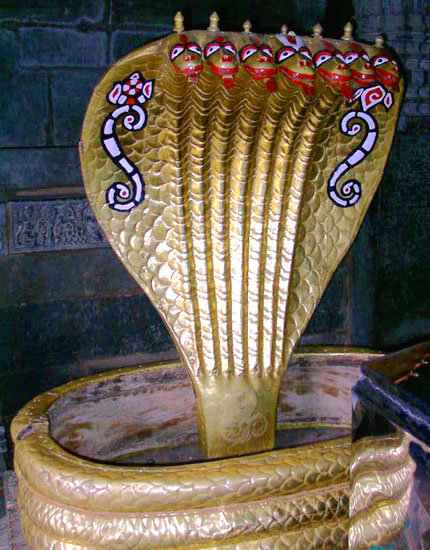 |
|
 |
About Vanamali Ashram |
Ashram Store |
Satsang |
Miracle at Vanamali |
Bhagavad Gita |
Home |
Vanamali Love Songs |
| Pilgrims Guide |
| Batu Caves |
Jotir Lingams |
Koteeswara Mahadeva |
Shirdi Baba |
Kedar |
